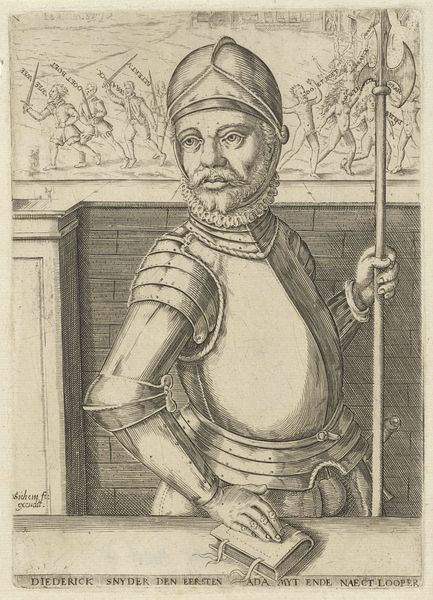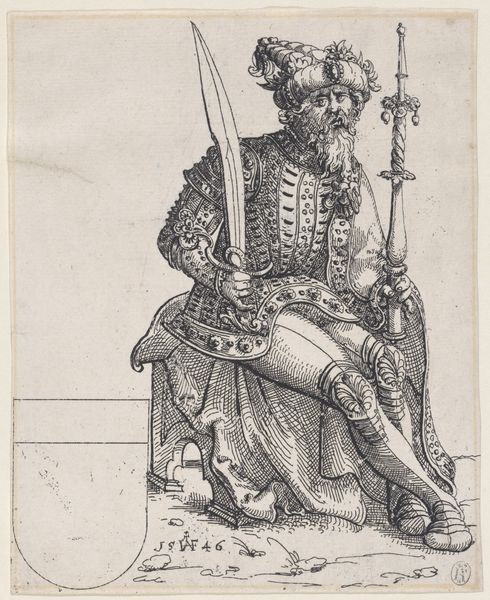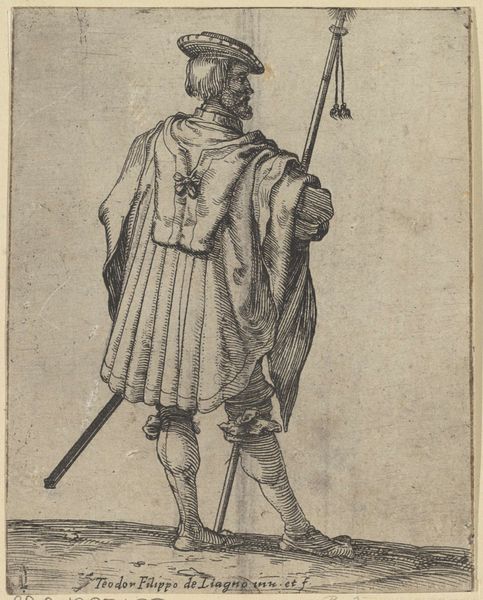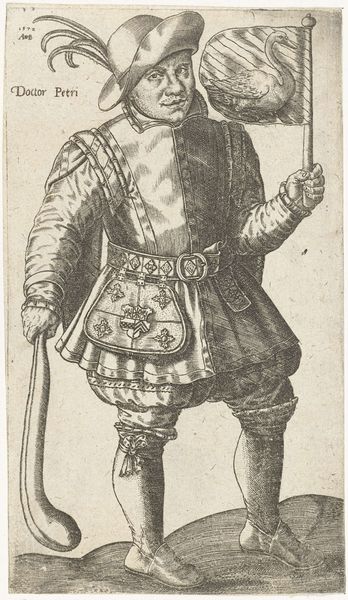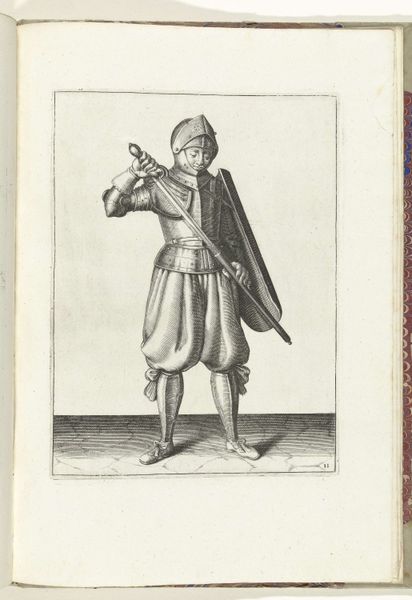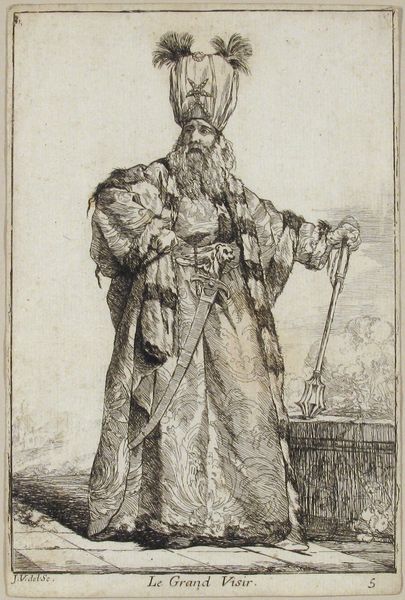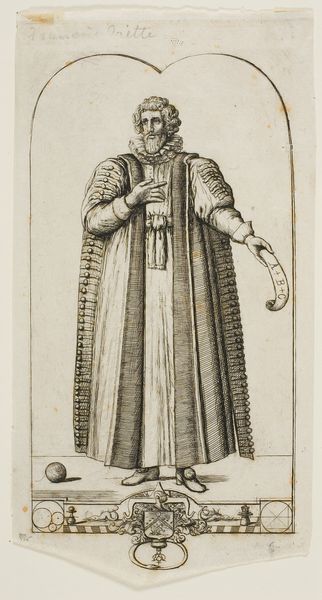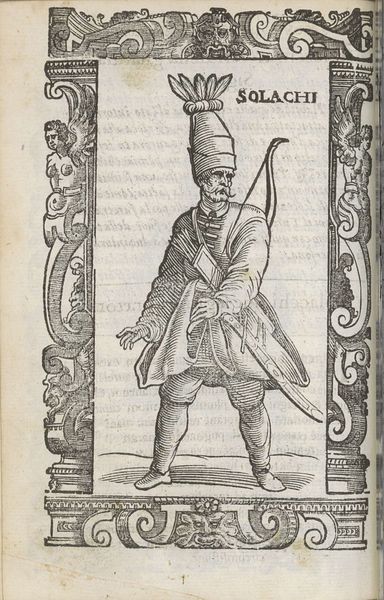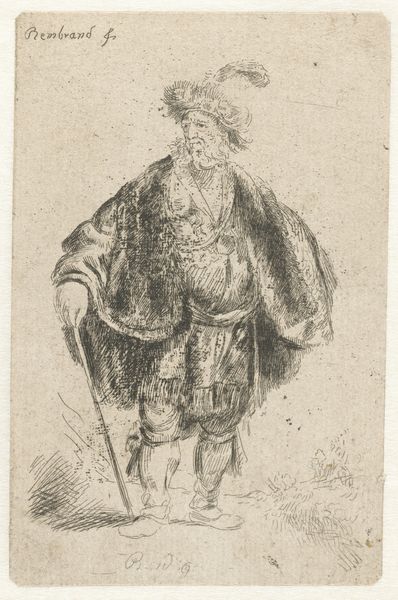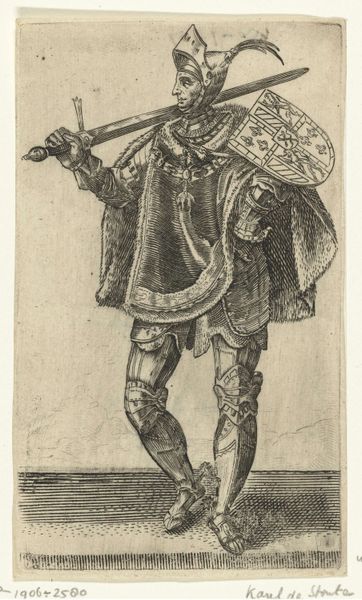
Dimensions: 18 x 7.3 cm (7 1/16 x 2 7/8 in.)
Copyright: CC0 1.0
Curator: Here we have Rembrandt van Rijn's small drawing, "Portrait of Aurangzeb (after a Mughal painting)." Editor: It’s fascinating. The starkness of the ink gives the figure a ghostly, almost ethereal presence. It really emphasizes the Mughal emperor’s regality and perhaps, even his isolation. Curator: Indeed. Rembrandt likely never encountered Aurangzeb directly. This drawing is thought to be based on a Mughal painting, reflecting Europe’s growing fascination with the East during the 17th century. Editor: The turban and sword are powerful symbols of authority, but look at the halo-like circle surrounding him, reminiscent of the sun, a symbol of divine power. It appears to set him apart. Curator: Absolutely, and consider Rembrandt's hand in interpreting this image. He subtly reshapes the visual language, reflecting his own cultural understanding of power and portraiture. Editor: It is a potent reminder of how images travel and transform meaning across cultures. Curator: Precisely. It reveals so much about the exchange of ideas between Europe and Asia during this period.
Comments
No comments
Be the first to comment and join the conversation on the ultimate creative platform.
